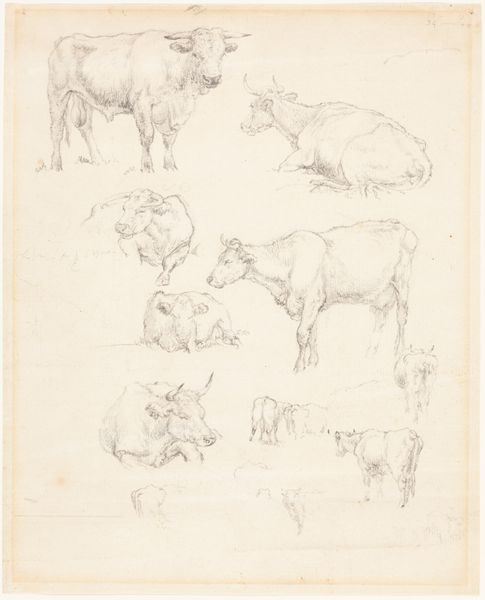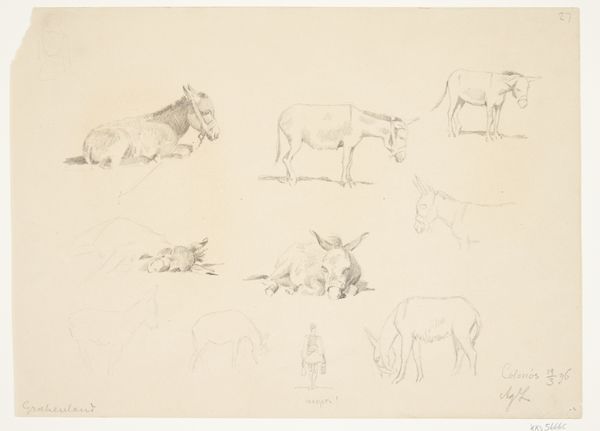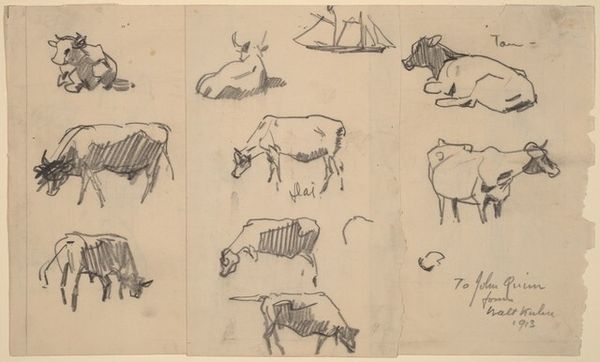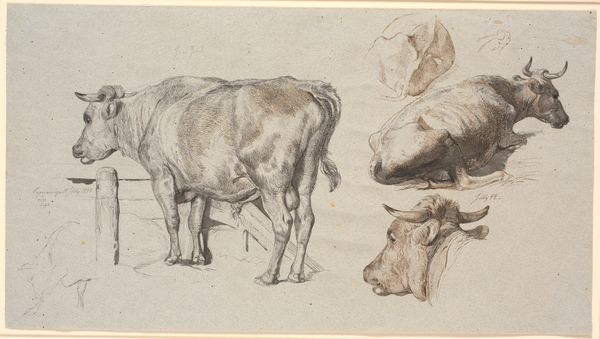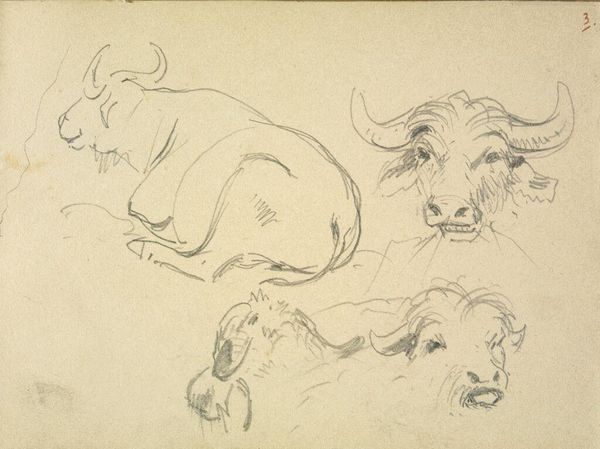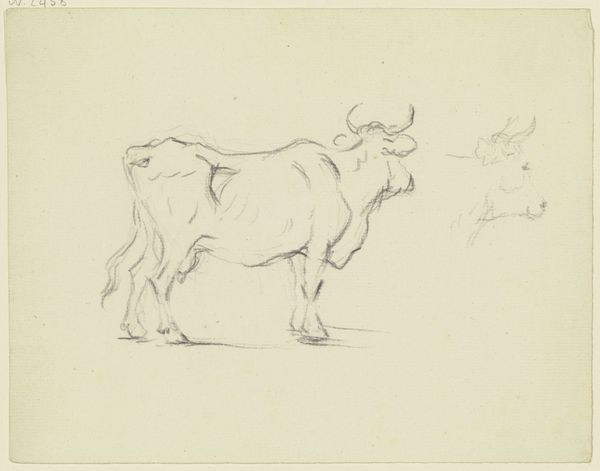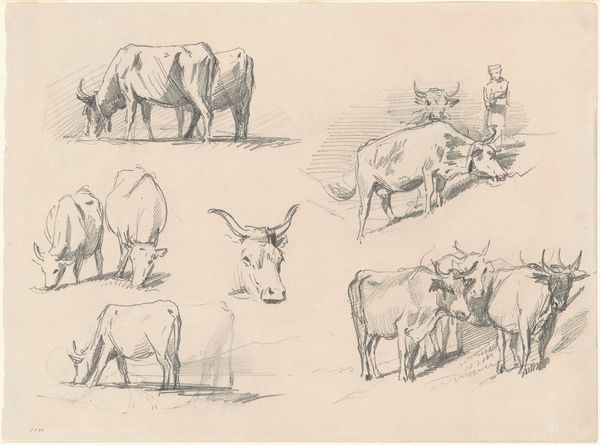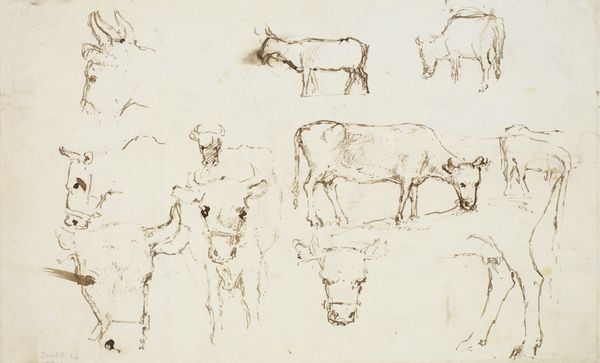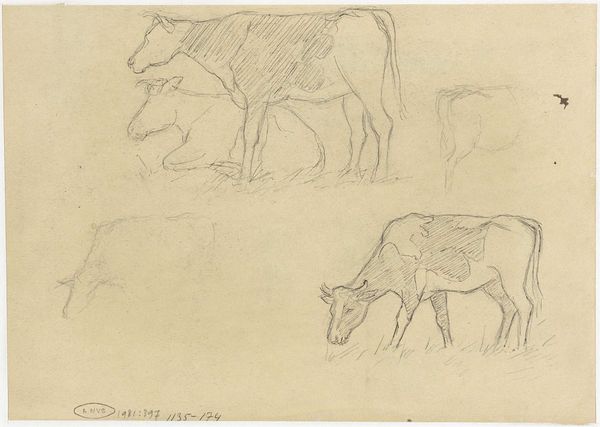
drawing, pencil
#
drawing
#
landscape
#
figuration
#
pencil
Copyright: Public Domain: Artvee
Editor: So, this drawing is called "Sketches of Swine and an Ox" by Charles-François Daubigny, rendered in pencil. It's really interesting – the composition feels very immediate, like a page from a sketchbook. How do you interpret this work? Curator: Well, consider the period, though undated, we can place Daubigny in the 19th century, a time when artists were increasingly engaging with the everyday life around them. What you see here isn’t some grand historical tableau but a series of studies of farm animals. In a way, this mirrors the rise of landscape painting and a broader cultural shift towards valuing rural life. How might these sketches function as documents of the period's relationship with the agrarian? Editor: I guess it shows a different kind of patronage and appreciation, less about mythology or royalty and more about ordinary life? Curator: Precisely. Think about who was commissioning and buying art. Increasingly, it was the bourgeoisie, who perhaps had a romanticized view of country life. Did the way these animals are depicted--more "rustic" looking--help bolster that romanticism, versus being very refined like you would expect a drawing to be of that era? Editor: Interesting. I hadn’t considered that it reflected back on the buyers, too, creating that link with nature, even just through owning the artwork. Curator: Yes. This drawing speaks to how artistic tastes and social values evolved together. Now, do you find anything unusual in the depiction? Editor: The ox's direct stare and relative scale versus the pigs is pretty interesting, makes me wonder if he considered it a prized animal versus the pigs that would eventually go to market. Curator: Indeed, which makes one wonder, did Daubigny’s seemingly straightforward sketch contribute to shaping—or reinforcing—certain class perceptions about the nobility of labor or perhaps the animals that work alongside us? Editor: So the drawing is not just a record, but it’s participating in a conversation about social roles and values at the time. Curator: Exactly. It’s about the public role of art in reflecting and, potentially, shaping our perceptions. Editor: Wow, that gives me a completely new way to see these seemingly simple animal sketches! Thanks for the insightful perspective!
Comments
No comments
Be the first to comment and join the conversation on the ultimate creative platform.
